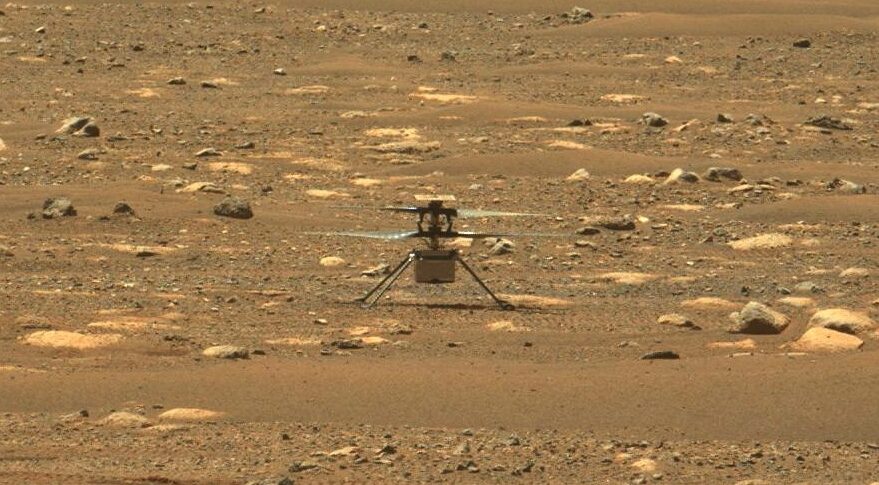Ingenuity still “as good as new” after nearly a year on Mars

WASHINGTON — After nearly a year of operations, NASA’s Ingenuity Mars helicopter is still “as good as new” as it serves as a scout for the Perseverance rover.
NASA’s Jet Propulsion Laboratory announced March 11 that Ingenuity completed its 21st flight on the planet, traveling 370 meters during the 129-second flight. The helicopter has now traveled more than 4.6 kilometers since its first flight in April 2021.
Ingenuity was developed as a technology demonstration, with an original plan of no more than five flights over a month. The excellent performance of the 1.8-kilogram helicopter, though, led NASA to extend its mission, using it as a scout to examine terrain ahead of the Perseverance rover that carried Ingenuity to Mars.
The information Ingenuity has provided has created some modest time savings for Perseverance. “It’s certainly shaved several sols, maybe a week, off of the time frame of the rover by having this advanced information,” said Matt Golombek, a senior research scientist at JPL who has been involved with Mars landers dating back to Mars Pathfinder, during a March 8 media briefing at the Lunar and Planetary Sciences Conference. A sol is a Martian day, about 40 minutes longer than a terrestrial day.
Other scientists involved with Perseverance agreed that Ingenuity has been useful. “I was really impressed with how well it worked and how useful it’s been,” said Justin Simon, a planetary scientist at NASA’s Johnson Space Center who works on the Perseverance mission, during a conference session March 7. “I don’t think that was fully anticipated, at least by myself.”
Keyron Hickman-Lewis of the U.K.’s Natural History Museum, another Perseverance scientist, said at that conference session that Ingenuity has been particularly helpful as Perseverance negotiated a region called Séítah. “The terrain is not optimal for a rover,” he said of the region. “These insights have been invaluable.”
That work will continue as Perseverance heads in the coming weeks to the remnants of a river delta. “The intent is to keep the helicopter out in front of the rover to provide advance information that would help in its exploration,” Golombek said. That includes scouting paths the rover could take into the delta and identifying rocks for the rover to study with its instrument suite.
Ingenuity itself has shown no signs of wear and tear after nearly a year of flying on Mars. “So far, we have found no degradation or loss of anything on the helicopter. It is as good as new,” he said.
The helicopter, which uses solar power, also has no consumables to limit its life. “There’s nothing consumable and nothing to stop us from continuing to operate as long as the helicopter remains healthy,” he said, with the expectation Ingenuity will continue operations until something finally breaks.
That performance is all the more noteworthy, he added, because of the use of commercial off-the-shelf parts that had been previously qualified for space on Ingenuity, rather than customized components. “It is rather remarkable that we’ve had no degradation or loss of any aspect of the helicopter,” he said.
Golombek said the performance of Ingenuity demonstrates how useful such helicopters could be in future exploration, although NASA has no firm plans currently for additional helicopter missions. “The idea of a technology demo is to demonstrate that here is a new way to explore Mars,” he said. “Ingenuity has shown the promise of this sort of way to continue our exploration of the red planet.”
No comments:
Post a Comment